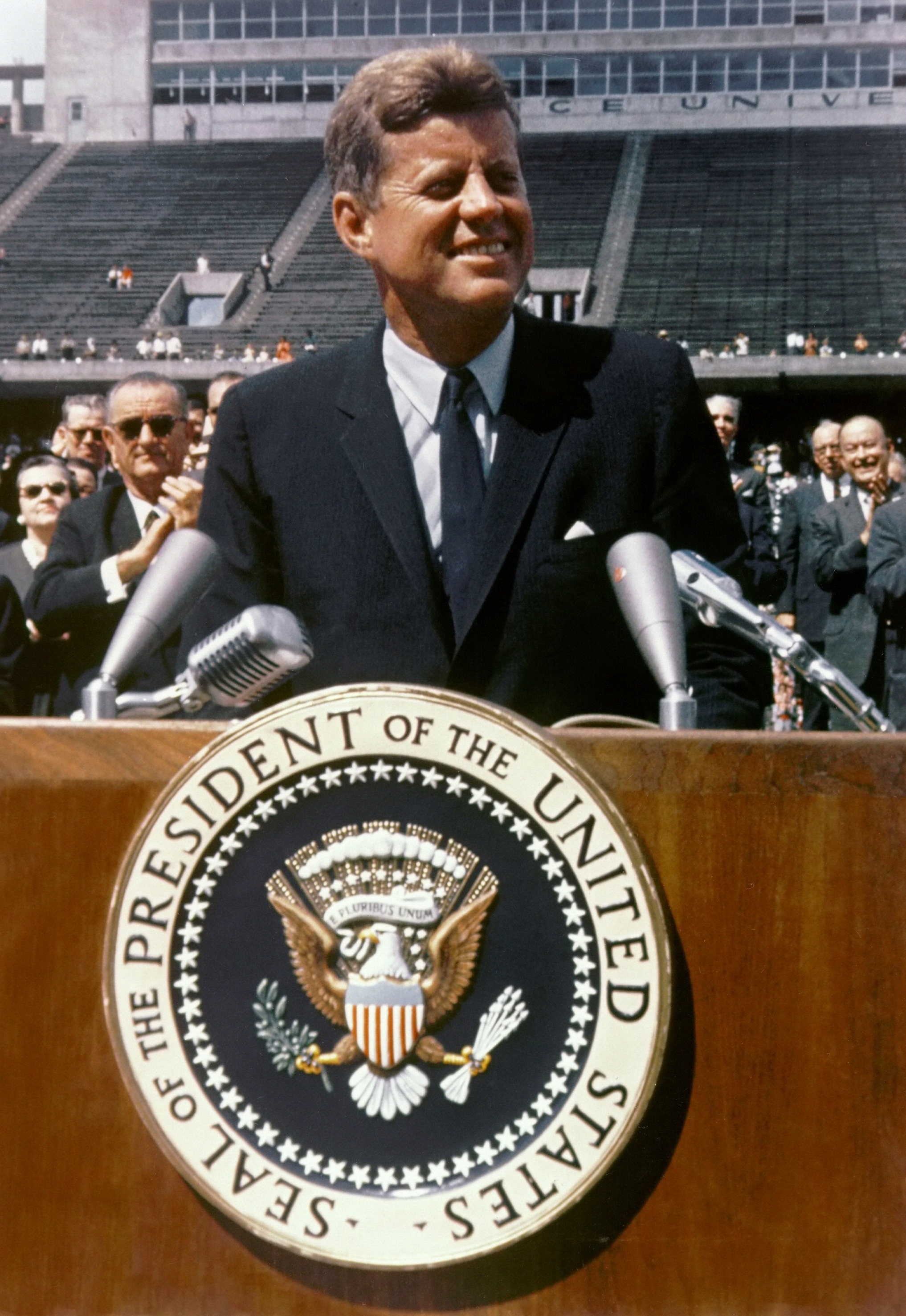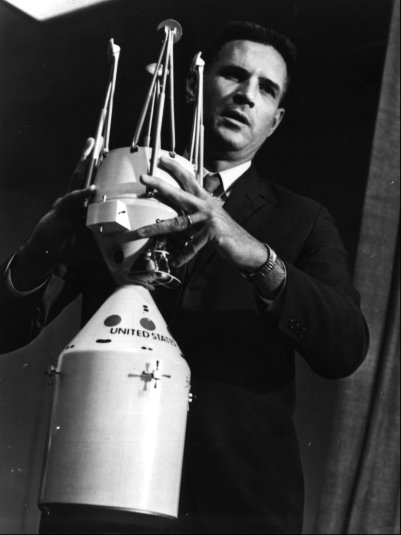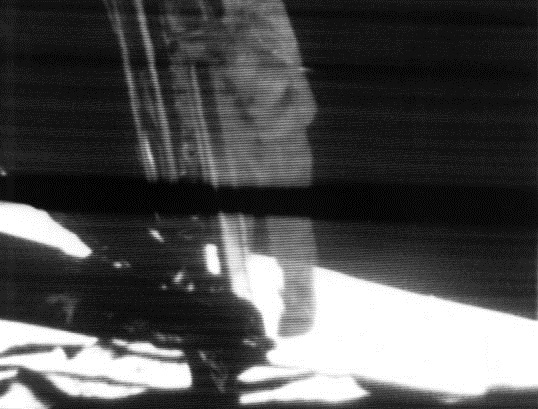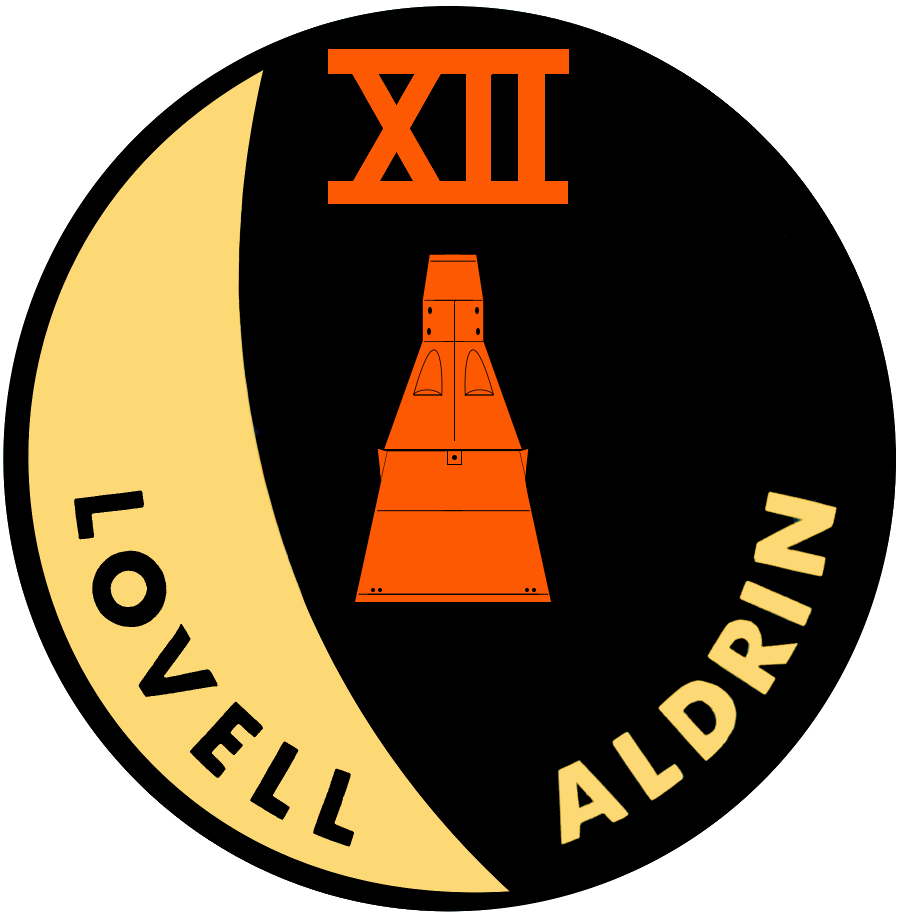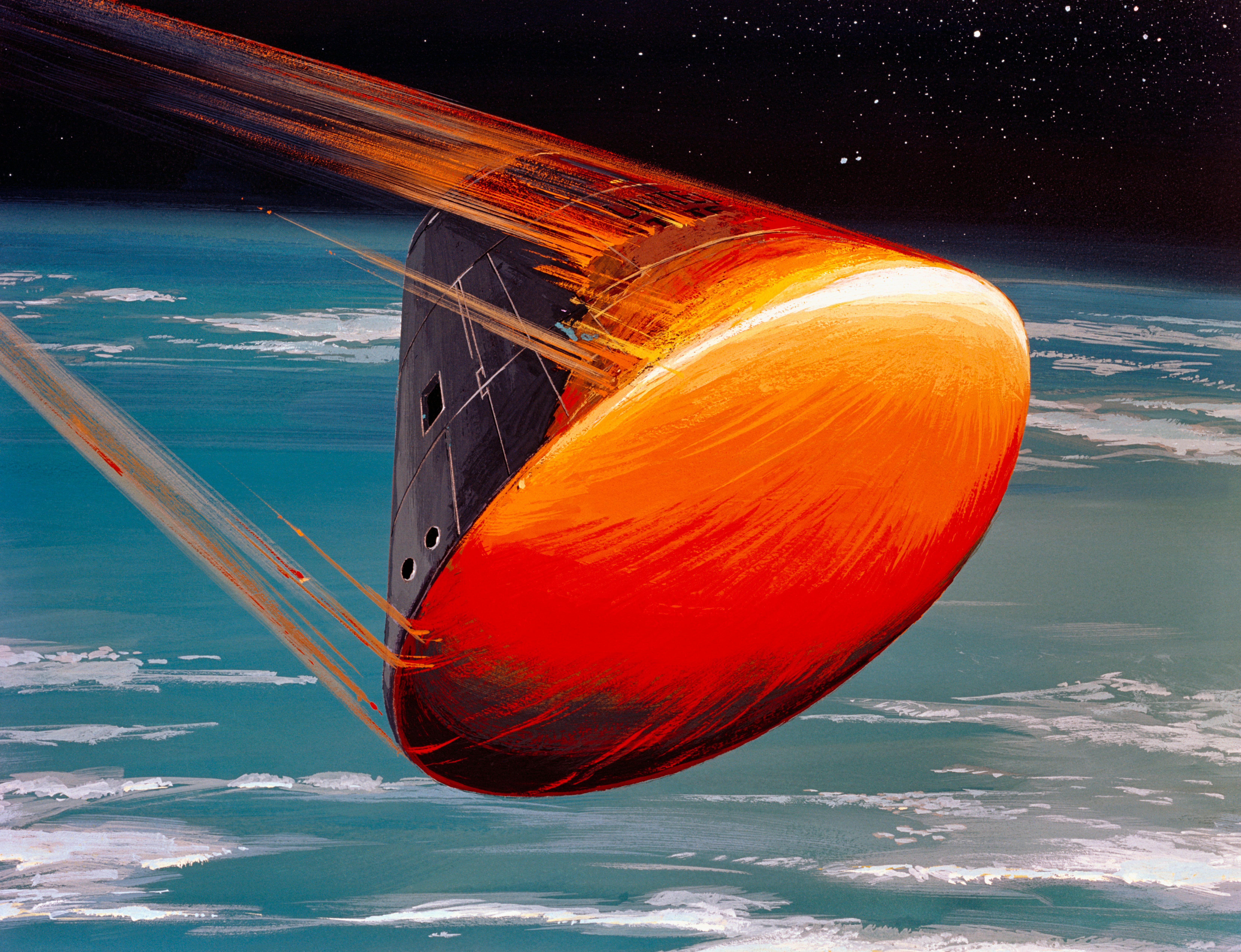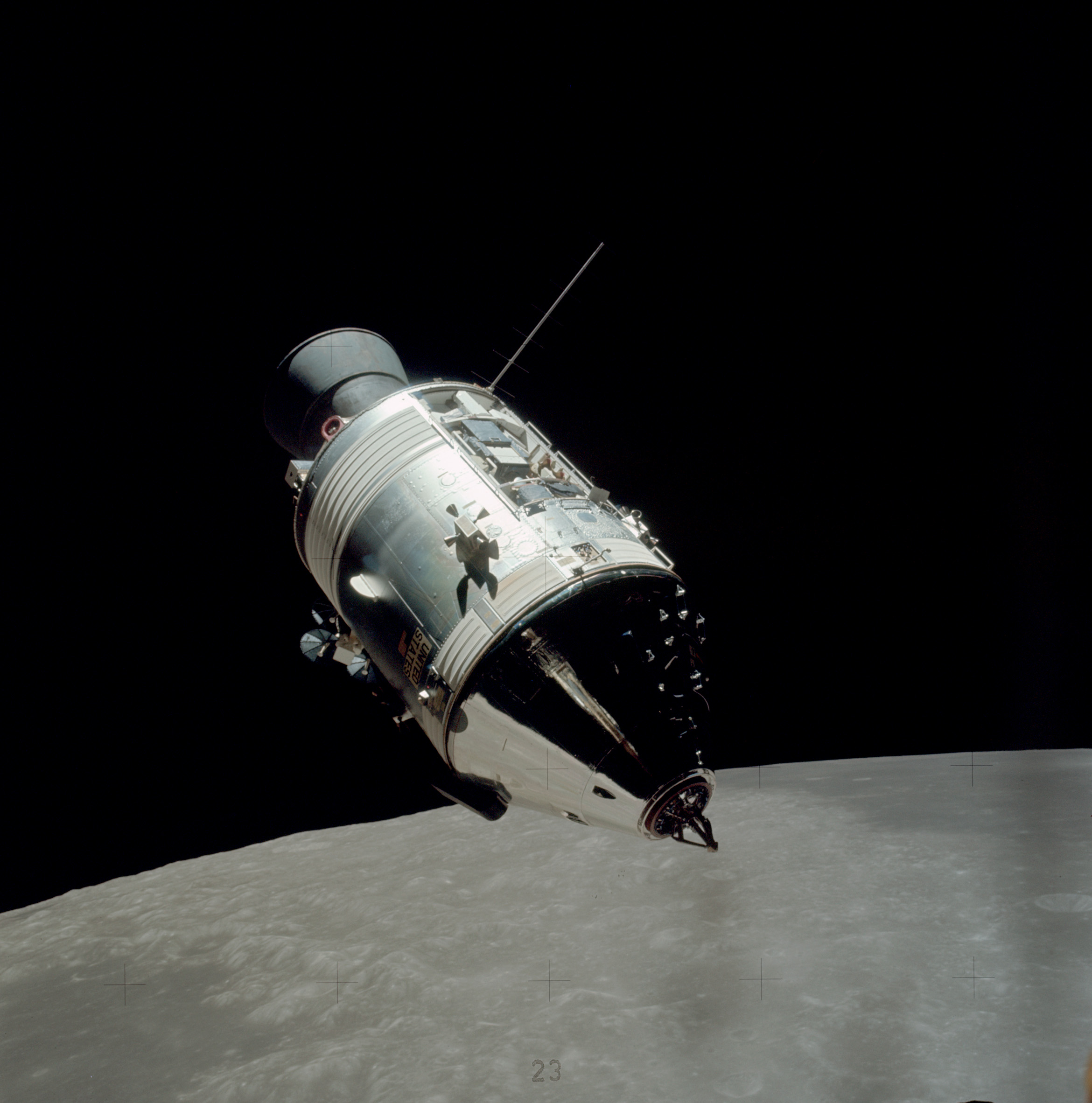|
Apollo 11
Apollo 11 was a spaceflight conducted from July 16 to 24, 1969, by the United States and launched by NASA. It marked the first time that humans Moon landing, landed on the Moon. Commander Neil Armstrong and Lunar Module pilot Buzz Aldrin landed the Lunar Module Eagle, Lunar Module ''Eagle'' on July 20, 1969, at 20:17 Coordinated Universal Time, UTC, and Armstrong became the first person to step onto the Moon's surface six hours and 39 minutes later, on July 21 at 02:56 UTC. Aldrin joined him 19 minutes later, and they spent about two and a quarter hours together exploring the site they had named Tranquility Base upon landing. Armstrong and Aldrin collected of lunar material to bring back to Earth as pilot Michael Collins (astronaut), Michael Collins flew the Command Module Columbia, Command Module ''Columbia'' in lunar orbit, and were on the Moon's surface for 21 hours, 36 minutes, before lifting off to rejoin ''Columbia''. Apollo 11 was launched by a Saturn V rocket from ... [...More Info...] [...Related Items...] OR: [Wikipedia] [Google] [Baidu] |
Apollo Lunar Module
The Apollo Lunar Module (LM ), originally designated the Lunar Excursion Module (LEM), was the lunar lander spacecraft that was flown between lunar orbit and the Moon's surface during the United States' Apollo program. It was the first crewed spacecraft to operate exclusively in the airless vacuum of space, and remains the only crewed vehicle to land anywhere beyond Earth. Structurally and aerodynamically incapable of flight through Earth's atmosphere, the Multistage rocket , two-stage Lunar Module was ferried to lunar orbit attached to the Apollo command and service module (CSM), about twice its mass. Its crew of two flew the Lunar Module from lunar orbit to the Moon's surface. During takeoff, the spent descent stage was used as a launch pad for the ascent stage which then Lunar orbit rendezvous, flew back to the command module, after which it was also discarded. Overseen by Grumman, the LM's development was plagued with problems that delayed its first uncrewed flight by about ... [...More Info...] [...Related Items...] OR: [Wikipedia] [Google] [Baidu] |
Moon
The Moon is Earth's only natural satellite. It Orbit of the Moon, orbits around Earth at Lunar distance, an average distance of (; about 30 times Earth diameter, Earth's diameter). The Moon rotation, rotates, with a rotation period (lunar day) that is synchronized to its orbital period (Lunar month#Synodic month, lunar month) of 29.5 Earth days. This is the product of Earth's gravitation having tidal forces, tidally pulled on the Moon until one part of it stopped rotating away from the near side of the Moon, near side, making always the same lunar surface face Earth. Conversley, the gravitational pull of the Moon, on Earth, is the main driver of Earth's tides. In geophysical definition of planet, geophysical terms, the Moon is a planetary-mass object or satellite planet. Its mass is 1.2% that of the Earth, and its diameter is , roughly one-quarter of Earth's (about as wide as the contiguous United States). Within the Solar System, it is the List of Solar System objects by ... [...More Info...] [...Related Items...] OR: [Wikipedia] [Google] [Baidu] |
Moon Landing
A Moon landing or lunar landing is the arrival of a spacecraft on the surface of the Moon, including both crewed and robotic missions. The first human-made object to touch the Moon was Luna 2 in 1959. In 1969 Apollo 11 was the first crewed mission to land on the Moon. There were List of Apollo missions#Crewed missions, six crewed landings between 1969 and 1972, and numerous uncrewed landings. All crewed missions to the Moon were conducted by the Apollo program, with the last departing the lunar surface in December 1972. After Luna 24 in 1976 there were no Soft landing (aeronautics), soft landings on the Moon until Chang'e 3 in 2013. All soft landings took place on the near side of the Moon until January 2019, when Chang'e 4 made the first landing on the far side of the Moon. Uncrewed landings Government landings Six government space agencies, Interkosmos, NASA, China National Space Administration, CNSA, Department of Space, DOS, JAXA and European Space Agency, ESA, ha ... [...More Info...] [...Related Items...] OR: [Wikipedia] [Google] [Baidu] |
Buzz Aldrin
Buzz Aldrin ( ; born Edwin Eugene Aldrin Jr.; January 20, 1930) is an American former astronaut, engineer and fighter pilot. He made three extravehicular activity, spacewalks as pilot of the 1966 Gemini 12 mission, and was the Lunar Module Eagle, Lunar Module ''Eagle'' pilot on the 1969 Apollo 11 mission. He was the List of people who have walked on the Moon, second person to walk on the Moon after mission commander Neil Armstrong. Following the deaths of Armstrong in 2012 and pilot Michael Collins (astronaut), Michael Collins in 2021, he is the last surviving Apollo 11 crew member. Born in Glen Ridge, New Jersey, Aldrin graduated third in the class of 1951 from the United States Military Academy at West Point with a degree in mechanical engineering. He was commissioned into the United States Air Force and served as a jet fighter pilot during the Korean War. He flew 66 combat missions and shot down two MiG-15 aircraft. After earning a Doctor of Science degree in astronautics f ... [...More Info...] [...Related Items...] OR: [Wikipedia] [Google] [Baidu] |
Trans-lunar Injection
A trans-lunar injection (TLI) is a propulsive maneuver, which is used to send a spacecraft to the Moon. Typical lunar transfer trajectories approximate Hohmann transfers, although low-energy transfers have also been used in some cases, as with the Hiten probe. For short duration missions without significant perturbations from sources outside the Earth-Moon system, a fast Hohmann transfer is typically more practical. A spacecraft performs TLI to begin a lunar transfer from a low circular parking orbit around Earth. The large TLI burn, usually performed by a chemical rocket engine, increases the spacecraft's velocity, changing its orbit from a circular low Earth orbit to a highly eccentric orbit. As the spacecraft begins coasting on the lunar transfer arc, its trajectory approximates an elliptical orbit about the Earth with an apogee near to the radius of the Moon's orbit. The TLI burn is sized and timed to precisely target the Moon as it revolves around the Earth. The bu ... [...More Info...] [...Related Items...] OR: [Wikipedia] [Google] [Baidu] |
Apollo Service Module
The Apollo command and service module (CSM) was one of two principal components of the United States Apollo spacecraft, used for the Apollo program, which landed astronauts on the Moon between 1969 and 1972. The CSM functioned as a mother ship, which carried a crew of three astronauts and the second Apollo spacecraft, the Apollo Lunar Module, to lunar orbit, and brought the astronauts back to Earth. It consisted of two parts: the conical command module, a cabin that housed the crew and carried equipment needed for atmospheric reentry and splashdown; and the cylindrical service module which provided propulsion, electrical power and storage for various consumables required during a mission. An umbilical connection transferred power and consumables between the two modules. Just before reentry of the command module on the return home, the umbilical connection was severed and the service module was cast off and allowed to burn up in the atmosphere. The CSM was developed and built ... [...More Info...] [...Related Items...] OR: [Wikipedia] [Google] [Baidu] |
Apollo (spacecraft)
The Apollo spacecraft was composed of three parts designed to accomplish the American Apollo program's goal of landing astronauts on the Moon by the end of the 1960s and returning them safely to Earth. The expendable (single-use) spacecraft consisted of a combined command and service module (CSM) and an Apollo Lunar Module (LM). Two additional components complemented the spacecraft stack for space vehicle assembly: a spacecraft–LM adapter (SLA) designed to shield the LM from the aerodynamic stress of launch and to connect the CSM to the Saturn launch vehicle and a launch escape system (LES) to carry the crew in the command module safely away from the launch vehicle in the event of a launch emergency. The design was based on the lunar orbit rendezvous approach: two docked spacecraft were sent to the Moon and went into lunar orbit. While the LM separated and landed, the CSM remained in orbit. After the lunar excursion, the two craft rendezvoused and docked in lunar orbit, a ... [...More Info...] [...Related Items...] OR: [Wikipedia] [Google] [Baidu] |
Merritt Island, Florida
Merritt Island is a peninsula, commonly referred to as an island, in Brevard County, Florida, United States, located on the eastern Florida coast, along the Atlantic Ocean. It is also the name of an unincorporated town in the central and southern parts of the island and a census-designated place (CDP). The population was 34,518 at the 2020 census, down from 34,743 at the 2010 census. It is part of the Palm Bay – Melbourne – Titusville, Florida Metropolitan Statistical Area, Palm Bay–Melbourne–Titusville, Florida Metropolitan Statistical Area. NASA's John F. Kennedy Space Center is located on Merritt Island to the north of the town, and Merritt Island National Wildlife Refuge is located north of the space center. The central part of Merritt Island, previously known as Merritt City, is home to the majority of the population and includes the local high school, library, and shopping district. The southern area is heavily residential, with centralized light commerce, comm ... [...More Info...] [...Related Items...] OR: [Wikipedia] [Google] [Baidu] |
Kennedy Space Center
The John F. Kennedy Space Center (KSC, originally known as the NASA Launch Operations Center), located on Merritt Island, Florida, is one of the NASA, National Aeronautics and Space Administration's (NASA) ten NASA facilities#List of field centers, field centers. Since 1968, KSC has been NASA's primary launch center of American spaceflight, research, and technology. Launch operations for the Apollo Program, Apollo, Skylab and Space Shuttle Program, Space Shuttle programs were carried out from Kennedy Space Center Launch Complex 39 and managed by KSC. Located on the east coast of Florida, KSC is adjacent to Cape Canaveral Space Force Station (CCSFS). The management of the two entities work very closely together, share resources, and operate facilities on each other's property. Though the first Apollo flights and all Project Mercury and Project Gemini flights took off from the then-Cape Canaveral Air Force Station, the launches were managed by KSC and its previous organization, ... [...More Info...] [...Related Items...] OR: [Wikipedia] [Google] [Baidu] |
Lunar Orbit
In astronomy and spaceflight, a lunar orbit (also known as a selenocentric orbit) is an orbit by an object around Earth's Moon. In general these orbits are not circular. When farthest from the Moon (at apoapsis) a spacecraft is said to be at apolune, apocynthion, or aposelene. When closest to the Moon (at periapsis) it is said to be at perilune, pericynthion, or periselene. These derive from names or epithets of the moon goddess. Lunar orbit insertion (LOI) is an orbit insertion maneuver used to achieve lunar orbit. Low lunar orbit (LLO) is an orbit below altitude. These have a period of about 2 hours. They are of particular interest in the exploration of the Moon, but suffer from gravitational perturbations that make most unstable, and leave only a few orbital trajectories possible for indefinite '' frozen orbits''. These would be useful for long-term stays in LLO. Perturbation effects and low orbits Most lunar low orbits below 100 km (60 mi) are unstable. Gravitationa ... [...More Info...] [...Related Items...] OR: [Wikipedia] [Google] [Baidu] |
Coordinated Universal Time
Coordinated Universal Time (UTC) is the primary time standard globally used to regulate clocks and time. It establishes a reference for the current time, forming the basis for civil time and time zones. UTC facilitates international communication, navigation, scientific research, and commerce. UTC has been widely embraced by most countries and is the effective successor to Greenwich Mean Time (GMT) in everyday usage and common applications. In specialised domains such as scientific research, navigation, and timekeeping, other standards such as Universal Time, UT1 and International Atomic Time (TAI) are also used alongside UTC. UTC is based on TAI (International Atomic Time, abbreviated from its French name, ''temps atomique international''), which is a weighted average of hundreds of atomic clocks worldwide. UTC is within about one second of mean solar time at 0° longitude, the currently used prime meridian, and is not adjusted for daylight saving time. The coordination of t ... [...More Info...] [...Related Items...] OR: [Wikipedia] [Google] [Baidu] |
Spaceflight
Spaceflight (or space flight) is an application of astronautics to fly objects, usually spacecraft, into or through outer space, either with or without humans on board. Most spaceflight is uncrewed and conducted mainly with spacecraft such as satellites in orbit around Earth, but also includes space probes for flights beyond Earth orbit. Such spaceflights operate either by telerobotic or autonomous control. The first spaceflights began in the 1950s with the launches of the Soviet Sputnik satellites and American Explorer and Vanguard missions. Human spaceflight programs include the Soyuz, Shenzhou, the past Apollo Moon landing and the Space Shuttle programs. Other current spaceflight are conducted to the International Space Station and to China's Tiangong Space Station. Spaceflights include the launches of Earth observation and telecommunications satellites, interplanetary missions, the rendezvouses and dockings with space stations, and crewed spaceflights on sci ... [...More Info...] [...Related Items...] OR: [Wikipedia] [Google] [Baidu] |
